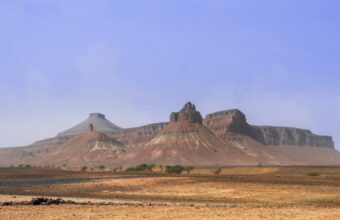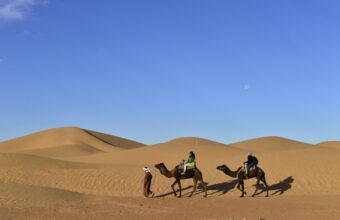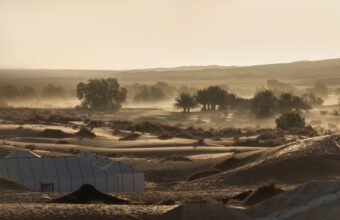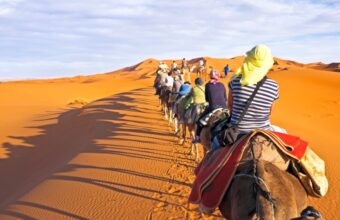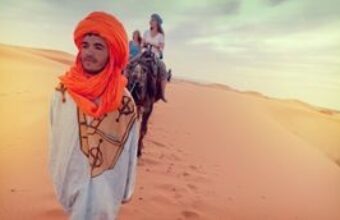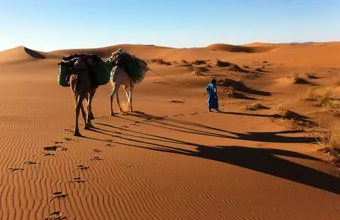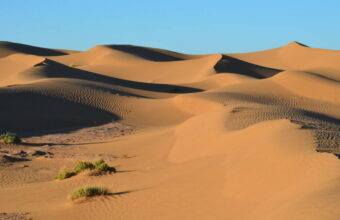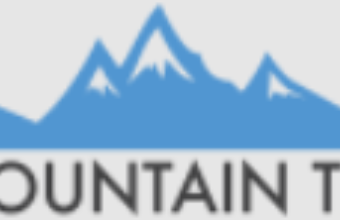Trekking in the Sahara
An expert guide to the best treks in Morocco's Sahara
In my time as a guidebook author and journalist I've covered everything from trekking in Morocco, to food tours of mediaeval Fez, to designer shopping in Marrakech. I’ve scaled Morocco’s High Atlas peaks, surfed its wild Atlantic coastline and rafted the Middle Atlas rapids.
But for me, trekking – on foot or by camel, or a mix of both – in the Sahara is to explore one of Morocco’s most fascinating – and misunderstood – regions.
Rocky desert stretches down through long-dry river valleys scattered with crumbling earthen kasbahs, through ancient oasis towns and lush palm groves, to the wind-sculpted sands of the Sahara, one of the most beguiling places I’ve ever visited and one of the few places you can truly disconnect.
These are the routes of age-old caravans when hundreds of people and thousands of camels spent months oasis-hopping as they transported gold, salt and slaves from sub-Saharan Africa, across the desert to Marrakech and Fez, leaving behind a desert-crossroads culture.
Few visitors to Morocco make it this far, and those that do tend to opt for one or two nights in a desert campsite. But, if you have the time and inclination for something more adventurous, I can highly recommend the overnight wild camping camel treks led by Amazigh (Berber) guides. You’ll trek by camel and on foot over sky-high dunes, across hamada (lunar-like stony plateaus) and among desert scrub to Erg Chigaga, or the even more remote Erg Zahar, like the nomadic tribes of old.
Sounds good, doesn’t it? Read on for my expert guide to trekking in Morocco’s Sahara desert.
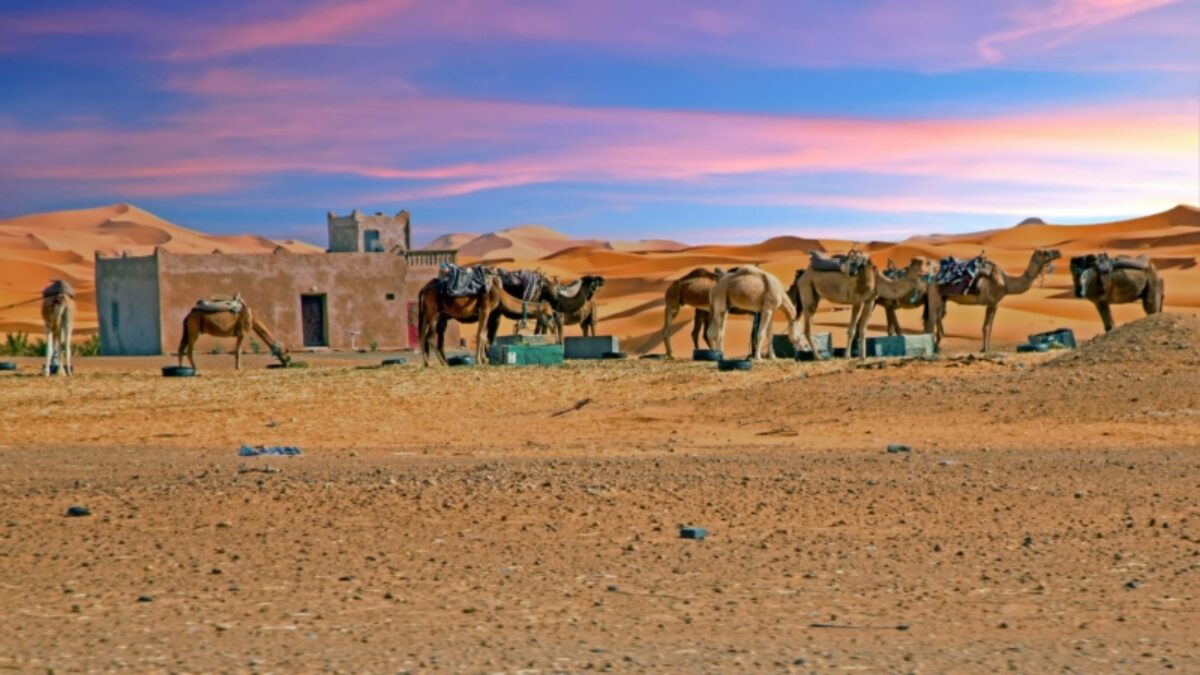
Camel trekking at sunset near Merzouga
The best Sahara treks
Our expert's top picks
The definition of a trekking “route” gets pretty loose in the Sahara, with each operator running their own preferred itineraries with a variety of distances, durations, and accommodations. But you’ll likely find some format of the following routes offered by Sahara trekking specialists. I can recommend them all, but if pushed for a favourite I’d probably vote for Erg Chigaga.
-
Iriqui National Park
-
Erg Chigaga
View trips -
Erg Zahar
View trips -
Atlas Mountains
View trips -
Erg Chebbi
View trips
Where to go trekking in the Sahara
The popular places, plus our expert's favourite hidden gems
The desert usually conjures images of a sea of shapeshifting dunes, or erg, in Morocco, where the two most visited ergs are Erg Chebbi and Erg Chigaga, reached from Merzouga and M’hamid, respectively.
You can also explore the desert from oasis towns, as well as dropping in on ancient ksour (maze-like mud-brick villages), fortified kasbahs, the local souk (market), and visit community-run museums that tell the story of nomadic life, warring tribes and the trans-Saharan caravans that traded between Amazigh, African, Jewish and Christian merchants.
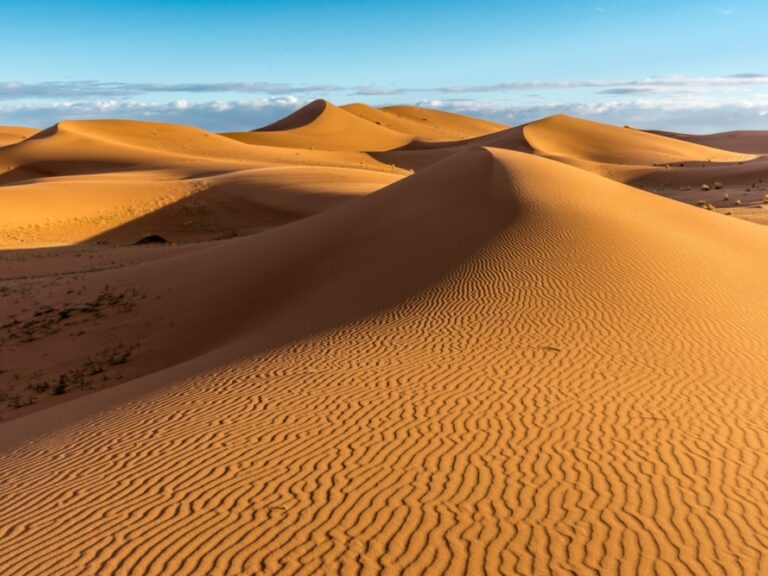
Sahara Desert
Best for a real adventure
M’hamid is the last Moroccan outpost before the Algerian border, where the road dissolves into sand and the desert takes over. It’s the jumping-off point for the dramatic dunes of Erg Chigaga, 60 kilometres to the west – around two hours by 4x4, or a thrilling three day trek by camel.
Erg Chigaga, Morocco’s longest and highest sand sea, ripples for around 40 kilometres with dunes topping 300m. It’s wilder and less visited than Erg Chebbi, and its camps are more isolated, but the off-road journey to get there is more expensive. On the way, there are stops at panoramic viewpoints and perhaps a mint tea break with desert nomads outside their goat-hair tent.
From your campsite, you can trek on foot or by camel, scramble up and sandboard down a towering dune, and savour the sunset and stellar desert views before stargazing from a carpet spread across the sand and music around the campfire. Look out for nocturnal wildlife: the fennec, with its enormous ears, is the smallest fox species, and sand cats are the only desert-dwelling felines. On a morning trek, your guide will point out its tiny tracks zigzagging across the dunes.
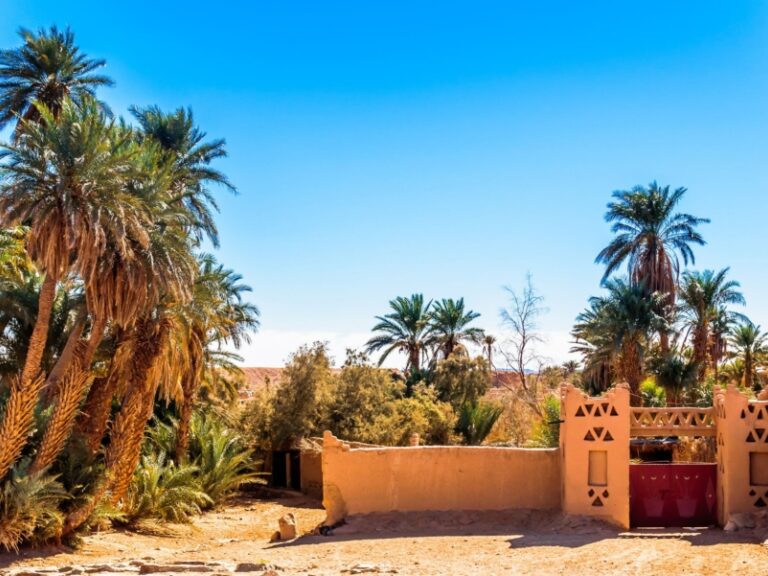
Sahara Desert
For more accessible trekking
The village of Merzouga has accommodation to suit all budgets, and you can arrange everything from a sunset camel safari to sandboarding, quad biking, overnight camping and longer treks.
Erg Chebbi is Morocco’s most accessible stretch of Sahara, with dunes around 22 kilometres long and 25 kilometres wide, reaching lofty heights of 160m in places. It is especially striking at sunset, turning from orange to pink and purple as the night sky glitters with stars. Then you might tuck into madfouna, or ‘Berber pizza’, a stuffed flatbread baked in a fire pit buried in the sand, before a campfire drumming session.
Campsites can be just 15 minutes from Merzouga by 4x4 or a couple of hours by camel. The downsides: convoys of vehicles dropping off people and supplies in high season, quad bikes overtaking camel caravans and being across a dune from another camp. If you want more solitude, choose your camp carefully or go out of season.
For a real hidden gem, the village of Khamlia, six kilometres south of Merzouga, is home to Dar Gnaoua, where musicians – including the renowned Les Pigeons du Sable – celebrate their sub-Saharan African roots, performing to an enthusiastic crowd, shaking krakebs (metal castanets) and keeping their hypnotic beat on tbel drums.
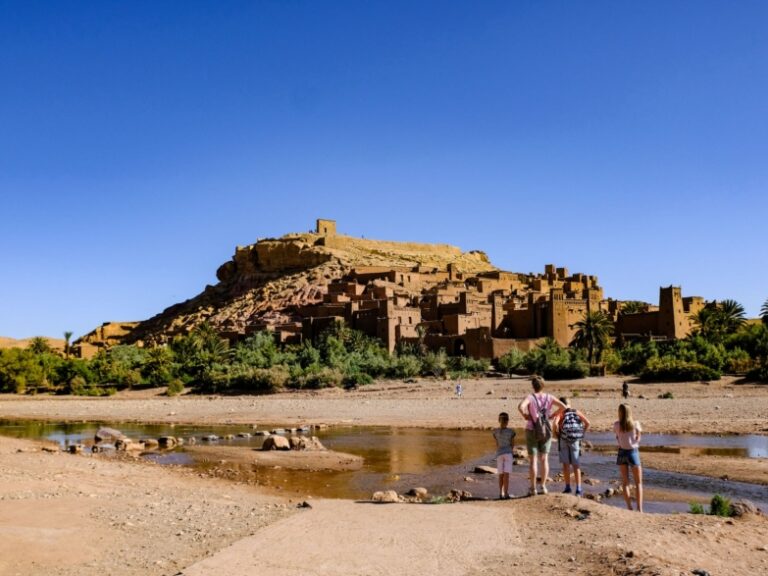
Ouarzazate
Explore Morocco’s desert culture
Dubbed ‘the door to the desert’, Ouarzazate is a good stopover between Marrakech and the Sahara. It was a hub for merchants who met to trade at the sprawling Taourirt Kasbah. Today, it’s known as ‘Morocco’s Hollywood’ for its star turns in Gladiator, among other blockbusters produced at the city’s Atlas Studios – cinephiles can tour the sets.
Nearby, the UNESCO-protected Ait Benhaddou has been the setting for several cinematic and small-screen epics. I like to arrive at the 11th-century hilltop citadel for sunset or sunrise when it’s bathed in a golden glow – the crowds are smaller at this time, too. Climb to its highest point for panoramic views worthy of Game of Thrones.
From Ouarzazate, you can drive south along the N9 to M’hamid through the scenic Draa River valley. It will take around four hours without stops, but I’d recommend dropping in on dusty towns and villages where the way of life has barely changed.
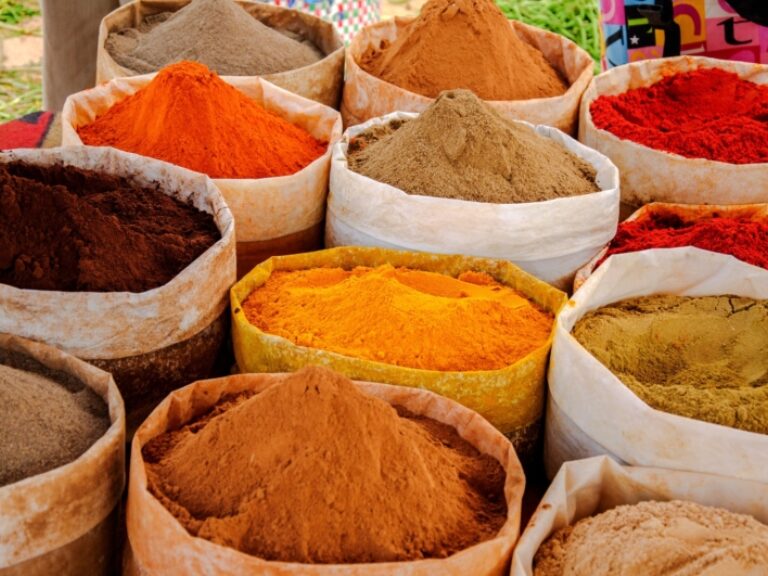
Sahara Desert
Traditional markets in Zagora
The oasis town of Zagora sits on the edge of the desert, and on its iconic and much-copied sign, a blue-turbaned nomad proclaims that you’re only 52 days from Timbuktu – by camel, that is.
Zagora hosts one of the biggest markets in the south on Wednesdays and Sundays, where alongside ubiquitous pyramids of spices and succulent dates from its palm groves, you’ll find people bartering over everything from car parts to still-clucking chickens.
For a greater understanding of desert culture, I’d recommend the museum in the well-preserved 16th-century Ksar Tissergate that documents the customs and traditions of the Draa Valley, from rustic tools to extravagant wedding costumes.
Zagora has plenty of stylish guesthouses, and while its rocky desert lacks the dramatic dunes of M’hamid, 90 minutes further south, it has an austere charm which you can explore by 4x4, quad bike, camel and on foot.
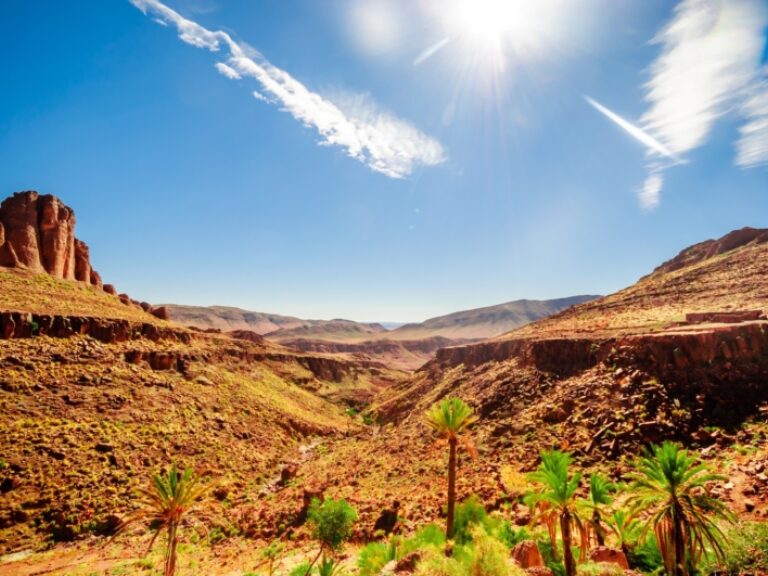
Sahara Desert
The Sahara’s hidden gem
South of the Dades Valley, N’kob feels like a well-kept secret. The ‘village of 45 kasbahs’ is the capital of the semi-nomadic Ait Atta tribe, and some families still follow the seasonal migration, departing in spring for greener pastures to the north.
N’kob is the southern gateway to the Jebel Saghro massif. Sitting between the High Atlas and the Sahara, rising to 2800m, the ‘Mountain of Drought’, dominates this starkly beautiful range, with its high-altitude desert-scapes, otherworldly rock formations and gaping canyons.
The Jebel Saghro Loop is an off-the-beaten-path five-day trek that starts near Boumalne Dades and ends at Kalaat M’Gouna, passing through remote hamlets and palm groves, crisscrossing mule tracks and dry river beds. Guides are optional and it makes an ideal winter trek when other Moroccan ranges are covered in snow.
From N’kob there’s a three-day loop, or you can traverse the massif from south to north, scale Jebel Saghro, along with numerous shorter treks, including to the striking rock pinnacles of Bab n’Ali.
Trekking in the Sahara: Need to know
Everything you wish you'd known before you booked
When to visit the Sahara desert
Temperatures are less extreme from March to May and again from September to November, making these my favourite times to go trekking in the Sahara. In summer, daytime temperatures regularly hit 40°C and above, while during winter, night-time temperatures can drop below freezing.
How to book
You can book a Sahara camel trek once in Morocco, you’ll find plenty of trekking outfits in Marrakech and any other big city. I’d strongly advise you to do your homework first and check for independent reviews; don’t just book something in the street. Make sure you’re booking directly with the actual operator and not just a reseller. Alternatively you can book ahead of time through either a local or an international operator. (Note that international operators often contract a local operator to actually run the trip.) This is probably the best way to book if you’re looking for something different to the more standard tours, and will allow you to check for things like animal welfare and independent reviews.
When booking – especially if you’re already in Morocco – double check exactly what’s included in the price and the important logistics. Good things to query include: what are the facilities like at camp? Are transfers included in the price? How much time is spent trekking each day? (Camel riding is fun, but first-timers may not want to plod through the desert for hours.) What’s the size of your group, and will you be camping near other groups?
Ethical camel trekking
Camels are working animals and played an important role in Morocco’s rich trading history; designed for desert life, they can survive on minimal water and cover long distances carrying heavy cargo.
Loping over the dunes atop a long-lashed dromedary is still the best way for travellers to discover the desert and you can do your bit to ensure that the camels are well cared for. Check out your camel before you get on board and only ride animals that look healthy with no obvious injuries. And make sure that the handlers appear to care about their welfare, treating them with respect rather than aggression. If you're booking through a large tour operator, ask if they have an animal welfare policy. If you're booking locally, ask to see the camels first: ethical operators should be happy to oblige.
Donating to international animal welfare charity SPANA helps to ensure a better life for Morocco’s working animals, such as donkeys and camels. With five centres around Morocco and two mobile clinics that reach remote areas, including the fringes of the Sahara, they collaborate with animal owners, offering training and treatment.
How to get comfortable on a camel
Camel riding is the quintessential desert experience and while feeling a little saddle sore is all part of the experience, it’s worth popping a painkiller around 30 minutes before you set off.
After you clamber aboard your sitting camel, make sure that you hold on tight – both to the camel and to your belongings – before it begins to unfurl its long limbs. A camel stands up with its hind legs first, so lean backwards then forward as it raises its front legs.
Straddling your camel like a horse might feel more natural, but sitting with one or both legs crossed over the front of the saddle will make for a more enjoyable ride, especially on longer journeys, and make you look like a pro.
A camel has wide, cushioned feet that stop it from sinking into soft sand and an unusual gait known as pacing – moving both legs on one side of its body at the same time – so sit back, relax and go with the gentle rocking motion.
What to pack
For trekking in the Sahara, a water bottle, wide-brimmed hat, sunglasses and sunscreen are essential, and a bandana will protect your face in a sand storm. Wearing light-coloured, long-sleeved shirts and trousers will keep you cool and prevent sunburn – and chafing if you’re camel riding. And don’t underestimate how low the temperature can dip at night, especially in December and January; bring a windproof jacket or fleece, a beanie and woolly socks for sunrise treks. And it's worth packing a head torch and a supply of energy-boosting snacks.

